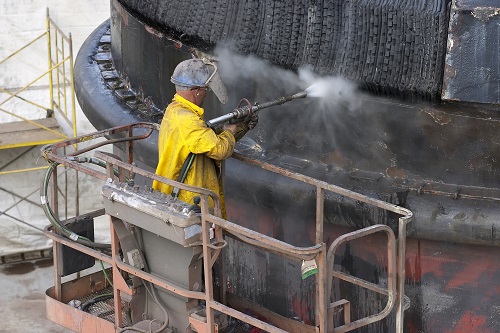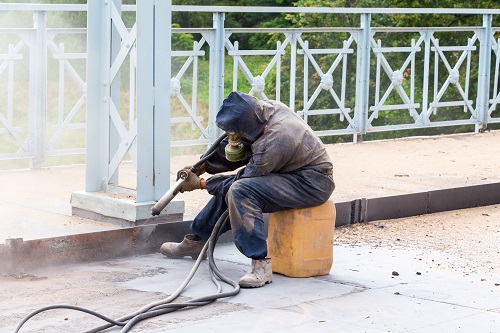Understanding the Differences between Sandblasting & Water Blasting
Dec 22, 2018

Surface preparation is very important when you want to do a paint job on a surface. It has to be done properly because it affects the service life, quality, and performance of the paint job. For a surface to get the best results, it has to be free of grease, dirt, and dust. It also has to be prepared in a proper way to ensure that the job goes well. Industrial painters use two types of methods for surface preparation namely sandblasting and water blasting. Advanced Prep Coat, Inc. explains the differences of the two.
Water Blasting
Water blasting surface preparation in New England is an eco-friendly, efficient, safe, and economical way to clean and preserve various surfaces. It has the advantage that you can prepare and clean a wide range of surface painted on the exterior without using chemicals or releasing dangerous toxins to the environment. It’s different from chemical-based cleaning in that no residues are left behind meaning that rinsing isn’t necessary.
The equipment used in water blasting gives you the allowance to change the pressure and use fan nozzles of different sizes depending on the job at hand. For example, if you want to remove contaminants, dust, and cobwebs, you can use low pressure. If you want to get rid of multi-layered coats, adhesive, clean cracks for repairs, or open pores on the surface for better application of a protective coat, then you need to increase the pressure.
Water blasting ensures that the surface being prepared is free of chemicals and clean for other uses like coating surface preparation in New England. Improper handling of water blasting equipment can damage and erode the surface being cleaned whether it’s metal or steel. Therefore, industrial painters are required to know how to handle the equipment.

Sandblasting
This is one of the most popular blasting surface preparation in New England used for metals. It gets rid of old paint, dust, and dirt from various surfaces. There are two types of sandblasting methods namely dry sandblasting and wet sandblasting. Dry sandblasting uses air that is highly pressurized together with abrasives. Wet sandblasting uses water that is high-powered together with material that’s abrasive or sand. The two methods do the same work of cleaning any surface.
Sandblasting has the advantage of cleaning a surface in a faster, better, and easier way than water blasting. It’s used in steel surface preparation in New England to make painting easier. The pressure used in sandblasting can be changed depending on the type of operation carried out. If it’s deep cleaning like smoothing surfaces, shaping, and roughening, high pressure is used. For light cleaning like getting rid of rust, cobwebs, dust, old paint, dirt, and grit, low pressure is used.
Sandblasting is very powerful compared to sandpapering. This reduces the time needed to clean surfaces from days to hours making the work for professionals easier. There are times when sandblasting is combined with steam cleaning or pressure washing in metal surface preparation in New England to make the painting process easier. However, dry sandblasting is very dangerous compared to wet sandblasting because it can make dust clouds that can be harmful. Therefore, there are countries where you need to have permission for you to do sandblasting.
Water blasting and sandblasting are both good ways of surface preparation. Choosing the right method depends on the condition and specification of the surface. If you’re not sure about the method to use, consult us at Advanced Prep Coat, Inc.
Advanced Prep Coat, Inc.
41C Sutton Lane
Worcester, MA 01603
63 School Street
Putnam, CT 06260
800-230-2937
- Connecticut
- Maine
- Massachusetts
- New Hampshire
- New York
- Rhode Island
- Vermont
- and the entire Northeast
